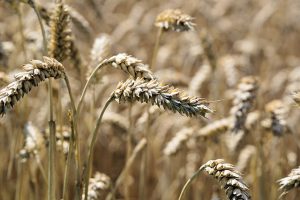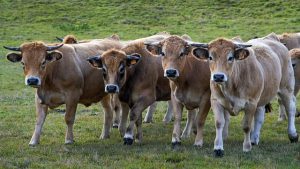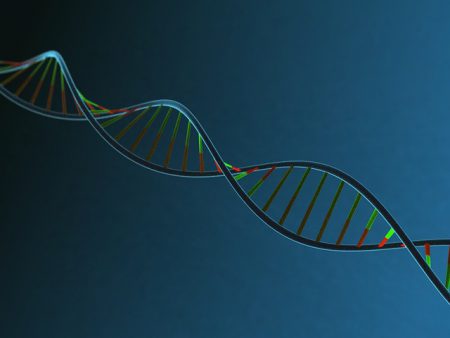Traits that may be measured coming from any activity in agriculture, such as crop yield, plant height, number of fruits per plant, milk production in cow or goat, meat yield in swine, egg production in hens, can be defined as phenotype. Phenotypes in one organism always will depend on a genetic component (DNA belonging to this organism), and a environmental component (any external factors such as weather and soil type in crops, or weather and feed in animals, etc.). For optimal management of the environmental component in crops, there are disciplines such as irrigation and water management, plant nutrition, weed management, insect pest and pathogens management, etc. For animal production, examples of these kind of knowledge areas are animal nutrition, and animal health management. Either crops, or animals, genetic component management is represented by the genetics.
Genetics is defined as the branch of biology which studies the heredity entities, and studies how inheritance works. Heredity or inheritance is the transmission of traits from parents to descendants.
Genetics, as any other knowledge area, may be classified according to the specific issue on which it works. Molecular Genetics studies the DNA molecule and the processes which it drives such as duplication transcription and translation. Classic or Mendelian Genetics works on the understanding of heredity mechanism by means of using planned crosses. Population Genetics studies how gene frequencies vary through time and space. Quantitative Genetics study the inheritance of complex traits, which are determined by several genes.
 Agriculture has been improved by using Molecular, Classic, Population and Quantitative Genetics. In agriculture, genetics is used for obtaining new cultivars, which is colloquially known as “new seeds”. In animal production, genetics generates new races or breeds. For obtaining either new cultivar in plants, or new breeds in animal, one or more genetics areas have had to be used.
Agriculture has been improved by using Molecular, Classic, Population and Quantitative Genetics. In agriculture, genetics is used for obtaining new cultivars, which is colloquially known as “new seeds”. In animal production, genetics generates new races or breeds. For obtaining either new cultivar in plants, or new breeds in animal, one or more genetics areas have had to be used.
Population genetics principles let us understand processes of the ancient agriculture and animal production, which resulted in species domestication from thousands years ago, by means of changes in genetic structure as consequence of human-driven selection. Our ancestors selected what they like, and therefore they were changing genetic structure of the population (plant and/or animal) on which they were acting, until domestication level we know in the current days. This principle of population change as consequence of selection is currently used in conventional plant or animal breeding; the main knowledge tool to do that are population genetics principles. At these present days, we know that there are monogenic traits (determined by one single gene,  without environmental influence) and polygenic traits (determined by several genes and highly influenced by environment). By joining of population and classic genetic knowledge, traits determined by one gene can be improved in plant and animal populations (seed color, resistance to diseases, hair color, etc.). Joining of knowledge of population genetics and quantitative genetics, polygenic traits (seed yield, milk production, meat production, egg production) can be also improved. Either monogenic, or polygenic traits, when genetics knowledge is used to optimize selection processes, the results are new cultivars in plants or new breeds in animals which satisfy what farmers need, or satisfy what final consumers wish. Molecular genetic knowledge has been able to design techniques to improve efficiency in selection processes in genetically variable populations, by means of molecular markers assisted selection. Molecular genetics has also been able to create organism modified genetically (OMG) (before know as transgenic organisms), which covered in 2015 a little bit more than 180 thousands of hectares in crops, in 28 countries.
without environmental influence) and polygenic traits (determined by several genes and highly influenced by environment). By joining of population and classic genetic knowledge, traits determined by one gene can be improved in plant and animal populations (seed color, resistance to diseases, hair color, etc.). Joining of knowledge of population genetics and quantitative genetics, polygenic traits (seed yield, milk production, meat production, egg production) can be also improved. Either monogenic, or polygenic traits, when genetics knowledge is used to optimize selection processes, the results are new cultivars in plants or new breeds in animals which satisfy what farmers need, or satisfy what final consumers wish. Molecular genetic knowledge has been able to design techniques to improve efficiency in selection processes in genetically variable populations, by means of molecular markers assisted selection. Molecular genetics has also been able to create organism modified genetically (OMG) (before know as transgenic organisms), which covered in 2015 a little bit more than 180 thousands of hectares in crops, in 28 countries.
Agriculture and animal production are complex and highly risky activities, therefore its planning and execution must consider several knowledge areas. By means of genetics, it is obtained the material which represents the first success warranty in the productive process: a new seed for the crops, or a new breed for animal production; these are the first success warranty in food production for human.
Ing. Agr. Hernán E. Laurentin T. (M. Sc., Ph. D.)




